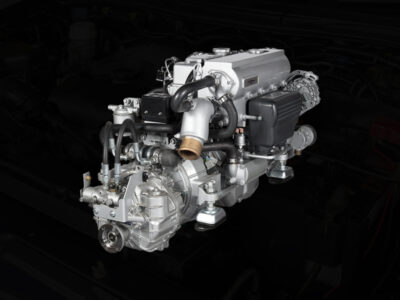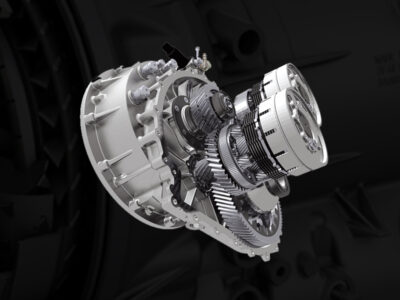
When it comes to replacing interior parts in your vehicle, the choice between authentic OEM used parts and aftermarket options can significantly affect the performance, appearance, and long-term value of your car. Understanding the key differences is crucial for making an informed decision that aligns with your budget and requirements.
What Are OEM Used Interior Parts?
OEM (Original Equipment Manufacturer) used interior parts are components originally manufactured by the same company that produced your vehicle. These parts are designed specifically for your make and model, ensuring a perfect fit and consistent quality. Despite being pre-owned, OEM used parts maintain the same engineering standards as brand-new components, making them a reliable choice for vehicle restoration or repair.
Advantages of OEM Used Interior Parts
- Precision Fit: OEM parts are designed for a seamless integration with your vehicle’s interior.
- Durability: Manufactured to original specifications, these parts often outlast aftermarket alternatives.
- Consistent Aesthetics: OEM parts retain the original design and finish, ensuring a uniform appearance.
- Resale Value: Vehicles repaired with OEM parts typically retain higher resale value.
Common Examples of OEM Used Interior Parts
- Seats and upholstery
- Dashboard components
- Door panels and trims
- Center consoles
- Steering wheels
What Are Aftermarket Interior Parts?
Aftermarket parts are produced by third-party manufacturers and are not affiliated with the original vehicle maker. While these components may be designed to mimic OEM specifications, they often vary in terms of material quality, fit, and finish.
Advantages of Aftermarket Interior Parts
- Affordability: Aftermarket parts are typically less expensive than OEM alternatives.
- Variety: A wide range of designs, colors, and materials allows for customization.
- Availability: Readily accessible, often with shorter lead times.
Key Differences Between OEM Used and Aftermarket Interior Parts
1. Quality and Durability
OEM used parts are built to meet strict manufacturing standards, ensuring superior quality and longevity. Aftermarket parts, while often cheaper, may use lower-grade materials, leading to faster wear and tear.
2. Fit and Compatibility
OEM used parts guarantee a perfect fit, as they are designed for specific makes and models. In contrast, aftermarket parts may require adjustments, leading to potential installation issues and compromised functionality.
3. Cost Effectiveness
While aftermarket parts may save you money upfront, the long-term costs of repairs, replacements, or diminished resale value can outweigh the initial savings. OEM used parts, though slightly pricier, often prove more economical over time due to their reliability.
4. Warranty and Assurance
OEM used parts sometimes come with limited warranties when purchased through certified dealers. Aftermarket parts, however, may lack such guarantees or offer less comprehensive coverage.
5. Aesthetic Consistency
OEM parts ensure the interior maintains its original look and feel. Aftermarket components, while diverse, may clash with your vehicle’s existing design.
Also read: Understanding Engine Specifications: A Key to Your Car’s Performance
How to Identify Authentic OEM Used Interior Parts
1. Verify Manufacturer Stamps or Logos
The original manufacturer often includes their logo or part number on authentic OEM parts, allowing you to cross-reference them with your vehicle’s specifications.
2. Purchase from Authorized Dealers
To ensure authenticity, always buy from trusted dealers specializing in OEM components. Avoid unverified online listings or suspiciously low prices.
3. Check Part Numbers
Cross-referencing part numbers with your vehicle’s manual or official manufacturer database helps confirm compatibility and authenticity.
4. Inspect Build Quality
Authentic OEM parts exhibit meticulous craftsmanship, with no signs of rough edges, mismatched materials, or inconsistent finishes.
5. Request Documentation
Reputable sellers provide documentation, including part history, mileage (if applicable), and warranty information, offering peace of mind.
How to Choose Between OEM and Aftermarket Interior Parts
When to Opt for OEM Used Parts
- Restoration Projects: For vintage or high-value vehicles, OEM parts preserve authenticity.
- Insurance Repairs: Insurers may recommend OEM parts for claims to ensure proper restoration.
- Safety Concerns: Critical components like airbags and seats should always be OEM.
When Aftermarket Parts May Be Suitable
- Budget Constraints: If affordability is a top priority, carefully selected aftermarket parts can suffice.
- Non-Essential Customizations: Decorative upgrades or non-structural components are less critical.
The Environmental Impact of Choosing OEM Used Parts
Opting for used OEM parts supports sustainability by reducing waste and the demand for new manufacturing. Recycling interior components helps minimize the environmental footprint of vehicle repairs.
Final thoughts
Selecting the right interior parts for your vehicle involves balancing cost, quality, and functionality. While aftermarket parts may appeal to budget-conscious buyers, OEM used parts remain the gold standard for ensuring a precise fit, lasting durability, and maintaining your vehicle’s original aesthetics. By understanding the differences and carefully evaluating your options, you can make a decision that enhances your vehicle’s performance and value.
How A111 Auto Parts Can Help in Providing OEM Used Interior Parts?
A111 Auto Parts specializes in high-quality OEM used interior parts, ensuring perfect fit and durability for your vehicle. With a vast inventory and up to a 1-year warranty, we make finding reliable parts easy and affordable. Trust us for inspected, authentic components that enhance your car’s interior. Upgrade your car’s interior with confidence—shop OEM parts with A111 Auto Parts now!





